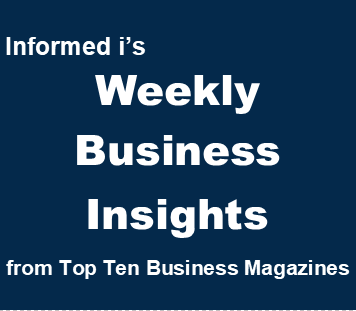
Extractive summaries and key takeaways from the articles carefully curated from TOP TEN BUSINESS MAGAZINES to promote informed business decision-making | Since 2017 | Week 387 | February 7-13, 2025 | Archive
Listen to this week’s newsletter
Shaping Section
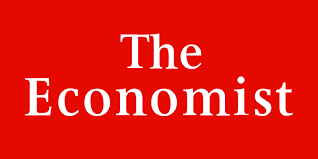
The vast and sophisticated global enterprise that is Scam Inc
The Economist | February 6, 2025
Extractive Summary of the Article | Listen
3 key takeaways from the article
- “Pig-butchering” is the most lucrative scam in a global industry that steals over $500bn a year from victims all around the world. “Scam Inc” is about the most significant change in transnational organised crime in decades.
- The industry is growing fast. In Singapore scams have become the most common felony. The UN says that in 2023 the industry employed just under 250,000 people in Cambodia and Myanmar; another estimate puts the number of workers worldwide at 1.5m.
- Online scams will be even harder to curb than the drugs trade—and, in contrast with drugs, the option of legalisation, regulation and treatment is not available. Education may help. But policing must also change. To fight the scammers, the authorities must create networks of their own. Today too many police forces that devote huge resources to combating the drugs trade treat scamming as a nuisance and victims as dupes. Instead they need to work with banks, crypto exchanges, internet-service providers, telecoms companies, social-media platforms and e-commerce firms.
(Copyright lies with the publisher)
Topics: Crime, Technology, Scam Inc, Pig-butchering, Sha zhu pan
Click for the extractive summary of the articleEDGAR MET Rita on LinkedIn. He worked for a Canadian software company, she was from Singapore and was with a large consultancy. They were just friends, but they chatted online all the time. One day Rita offered to teach him how to trade crypto. With her help, he made good money. So he raised his stake. However, after Edgar tried to cash out, it became clear that the crypto-trading site was a fake and that he had lost $78,000. Rita, it turned out, was a trafficked Filipina held prisoner in a compound in Myanmar.
In their different ways, Edgar and Rita were both victims of “pig-butchering”, the most lucrative scam in a global industry that steals over $500bn a year from victims all around the world. “Scam Inc” is about the most significant change in transnational organised crime in decades.
Pig-butchering, or sha zhu pan, is Chinese criminal slang. First the scammers build a sty, with fake social-media profiles. Then they pick the pig, by identifying a target; raise the pig, by spending weeks or months building trust; cut the pig, by tempting them to invest; and butcher the pig by squeezing “every last drop of juice” from them, their family and friends.
The industry is growing fast. In Singapore scams have become the most common felony. The UN says that in 2023 the industry employed just under 250,000 people in Cambodia and Myanmar; another estimate puts the number of workers worldwide at 1.5m.
Online scamming compares in size and scope to the illegal drug industry. Except that in many ways it is worse. One reason is that everyone becomes a potential target simply by going about their lives. Another reason scamming is worse than drugs is that the industry is often beyond the reach of the law. The last reason the scamming is worse than drugs is that it is so innovative. Crooks use advanced malware to harvest sensitive data from victims’ devices. Online marketplaces trade tools and services, including web domains, artificial-intelligence (AI) software and torture instruments. Cryptocurrency enables crooks to move money quickly and anonymously into the real world. Regardless of its merits, the crypto deregulation under way in America will give them fresh opportunities.
Online scams will be even harder to curb than the drugs trade—and, in contrast with drugs, the option of legalisation, regulation and treatment is not available. Education may help. But policing must also change. To fight the scammers, the authorities must create networks of their own. Today too many police forces that devote huge resources to combating the drugs trade treat scamming as a nuisance and victims as dupes. Instead they need to work with banks, crypto exchanges, internet-service providers, telecoms companies, social-media platforms and e-commerce firms.
show less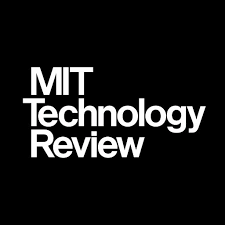
Meta has an AI for brain typing, but it’s stuck in the lab
By Antonio Regalado | MIT Technology Review | February 7, 2025
Extractive Summary of the Article | Listen
3 key takeaways from the article
- Back in 2017, Facebook unveiled plans for a brain-reading hat that you could use to text just by thinking. “We’re working on a system that will let you type straight from your brain,” CEO Mark Zuckerberg shared in a post that year. Now the company, since renamed Meta, has actually done it. Except it weighs a half a ton, costs $2 million, and won’t ever leave the lab.
- Facebook’s original quest for a consumer brain-reading cap or headband ran into technical obstacles, and after four years, the company scrapped the idea. But Meta never stopped supporting basic research on neuroscience, something it now sees as an important pathway to more powerful AIs that learn and reason like humans.
- Research on brain reading has been advancing quickly. In 2023, for instance, a person who lost her voice from ALS was able to speak via brain-reading software connected to a voice synthesizer. Neuralink, founded by Elon Musk, is testing its own brain implant that gives paralyzed people control over a cursor.
(Copyright lies with the publisher)
Topics: Human and Technology, Artificial Intelligence
Click for the extractive summary of the articleBack in 2017, Facebook unveiled plans for a brain-reading hat that you could use to text just by thinking. “We’re working on a system that will let you type straight from your brain,” CEO Mark Zuckerberg shared in a post that year. Now the company, since renamed Meta, has actually done it. Except it weighs a half a ton, costs $2 million, and won’t ever leave the lab.
Still, it’s pretty cool that neuroscience and AI researchers working for Meta have managed to analyze people’s brains as they type and determine what keys they are pressing, just from their thoughts. According to Jean-Rémi King, leader of Meta’s “Brain & AI” research team, the system is able to determine what letter a skilled typist has pressed as much as 80% of the time, an accuracy high enough to reconstruct full sentences from the brain signals.
Facebook’s original quest for a consumer brain-reading cap or headband ran into technical obstacles, and after four years, the company scrapped the idea. But Meta never stopped supporting basic research on neuroscience, something it now sees as an important pathway to more powerful AIs that learn and reason like humans. King says his group, based in Paris, is specifically tasked with figuring out “the principles of intelligence” from the human brain. “Trying to understand the precise architecture or principles of the human brain could be a way to inform the development of machine intelligence,” says King. “That’s the path.”
Research on brain reading has been advancing quickly. In 2023, for instance, a person who lost her voice from ALS was able to speak via brain-reading software connected to a voice synthesizer. Neuralink, founded by Elon Musk, is testing its own brain implant that gives paralyzed people control over a cursor.
show lessStrategy & Business Model Section
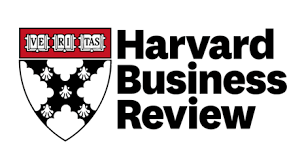
The Power of Strategic Fit
By Darrell Rigby and Zach First | Harvard Business Review Magazine | March–April 2025
Extractive Summary of the Article | Listen
3 key takeaways from the article
- Facing heavy pressure to improve the worth of their company, many managers have turned to what we call “spreadsheet strategies.” They set financial goals sufficient to meet analysts’ expectations and then backing into ways to achieve it. That approach has established flaws. A better approach is to pursue strategic fit.
- Strategic fit is the degree of alignment and amount of synergy in a company’s business system. When a firm’s strategic fit is optimal, it creates beneficial multiplier effects among all the components of the business. Strategic fit produces a system that is nearly impossible for competitors to replicate—provided the company adapts effectively to changing conditions.
- The process of achieving strategic fit begins by identifying seven essential elements of strategy. Because they must remain aligned under ever-changing and unpredictable conditions to deliver superior performance, they should be developed concurrently and iteratively. These elements are the mental model, purpose and ambitions, stakeholders value-creation, macro forces, markets and products, competitive advantages, and the operating models.
(Copyright lies with the publisher)
Topics: Strategy, Business Model, Strategic Fit
Click for the extractive summary of the articleFacing heavy pressure to improve the worth of their company, many managers have turned to what we call “spreadsheet strategies.” They set financial goals sufficient to meet analysts’ expectations and then fill in row by row, column after column, tweaking the numbers to find a plan that appears plausible and then backing into ways to achieve it. That approach has four flaws.
First, it grants excessive credence to archaic accounting rules as the best way to measure the value of modern companies. Second, spreadsheet strategies typically extrapolate positive linear relationships ad infinitum. Third, these strategies assume that practices are interchangeable. Fourth, spreadsheet strategies divorce corporate strategy from unit operations.
Strategic fit is the degree of alignment and amount of synergy in a company’s business system. When a firm’s strategic fit is optimal, it creates beneficial multiplier effects among all the components of the business. Strategic fit produces a system that is nearly impossible for competitors to replicate—provided the company adapts effectively to changing conditions.
The process of achieving strategic fit begins by identifying seven essential elements of strategy. Because they must remain aligned under ever-changing and unpredictable conditions to deliver superior performance, they should be developed concurrently and iteratively.
- The mental model. Success hinges on understanding how a business really works and how it can capitalize on changing market conditions. Effective leaders develop mental models that approximate complex realities yet are simple enough to guide daily decisions.
- Purpose and ambitions. A company’s purpose and ambitions are intertwined. Purpose is the reason the company exists and what it aims to achieve for others, whereas ambitions are what the company hopes to accomplish for itself, including financial and operational goals. To understand the true essence of a company’s purpose and ambitions, you must look at its actions, not merely its words.
- Stakeholder value creation. The goal of stakeholder value creation is to continually increase the value that all stakeholders receive from and contribute to the business.
- Macro forces. Macro forces are inherently unstable and outside the direct control of companies. However, companies should monitor them and adapt their strategy to capitalize on emerging opportunities rather than struggle against unfavorable trends.
- Markets and products. Because complex systems are always changing, companies must constantly consider where they will do business—and where they will not. They spend significant time and money searching for the best markets for their products. But the real challenge is determining what “best” means, since markets and products that are blockbusters for one company may be flops for another.
- Competitive advantages. Competitive advantages are unique attributes or capabilities that enable a company to outperform competitors. They are crucial to the performance and long-term success of a company.
- The operating model. An operating model comprises the organization’s structure and accountabilities, governance processes and metrics, leadership and culture, talent and performance management, business processes, and technology and data. It is the organizational engine that unleashes the power of people and fuels value creation.
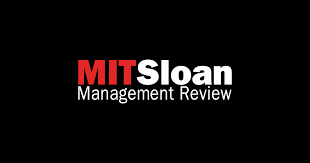
How Chinese Companies Expand Globally Despite Headwinds
By Shameen Prashantham and Lola Woetzel | MIT Sloan Management Review Magazine | Spring 2025 Issue
Extractive Summary of the Article | Listen
3 key takeaways from the article
- Chinese companies face a threefold challenge in expanding internationally: rising trade tensions with the United States, new investment regulations put in place by other countries and local jurisdictions, and infrastructure deficits, bureaucratic inefficiency, and unfamiliar cultures in emerging markets.
- How are Chinese companies tackling these challenges? Executives in China are strategically using microregions for global marketing. Even within the same country, microregions vary widely from one another in terms of incomes, demographics, infrastructure, governance, and friendliness to foreign businesses.
- Three place-based strategies that are helping Chinese companies expand internationally in these challenging times: finding new routes to existing markets, building hubs to reach emerging markets, and going virtual through digital talent hubs.
(Copyright lies with the publisher)
Topics: Strategy, Business Model, Chinese Firms, Microregions, EU, USA, Virtual Talent Hubs, Emerging Markets, Trade Hubs
Click for the extractive summary of the articleChinese companies face a threefold challenge in expanding internationally. The first is rising trade tensions with the United States. The once globally dominant flow of trade between the U.S. and China has been curtailed by increased tariffs and export controls. The second challenge is new investment regulations put in place by other countries and local jurisdictions. Governments in North America and Western Europe have increased their regulatory scrutiny of foreign businesses, especially Chinese ones. Third, while emerging markets hold the potential for growth, Chinese companies often face infrastructure deficits, bureaucratic inefficiency, and unfamiliar cultures in such markets.
How are Chinese companies tackling these challenges? Executives in China are strategically using microregions for global marketing.
Even within the same country, microregions vary widely from one another in terms of incomes, demographics, infrastructures, governance, and friendliness to foreign businesses. They present executives with a more fine-grained picture of where global opportunities are situated compared to looking for opportunities at the national level. In most cases, Chinese executives analyze and identify international business opportunities with a focus on these smaller geographic entities rather than country markets, although some very small countries, such as Singapore, constitute a microregion on their own.
Chinese executives, thinking at the microregion level comes naturally, given China’s development history. Of the 2 billion people in microregions who achieved high living standards during the past 20 years, 1.1 billion lived in China. Even before economic reforms were rolled out in the 1980s, China had adopted a historically decentralized pattern of economic development. Chinese businesses naturally engage locally because that is how most of them got started.
Three place-based strategies that are helping Chinese companies expand internationally in these challenging times.
- Finding new routes to existing markets. Chinese companies are turning to microregions that provide a viable pathway to existing markets that might have grown harder to access, such as those in North America and Europe. It means relocating operations to strategically advantageous places where companies can add value. This generally takes two broad forms: adding non-China locations to their supply chains and relocate the entire business from China to a receptive microregion to gain a different nationality and potentially circumvent certain challenges associated with its original nationality.
- Building hubs to reach emerging markets. Africa, Latin America, the Middle East, and Southeast Asia are also areas in which Chinese businesses are building beachheads to access emerging markets.
- Going virtual through digital talent hubs. Finally, Chinese companies are using digital talent hubs to expand into both familiar and new markets. This strategy uses digital technologies and distributed digital talent to virtually connect resources and opportunities, reducing the need to deal with complex and changing investment regimes in target markets.
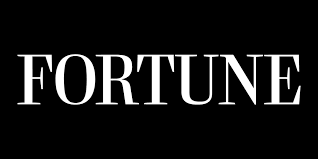
How Hitachi hedges against a global trade war
By Peter Vanham | Fortune | February 6, 2025
Extractive Summary of the Article | Listen
3 key takeaways from the article
- As a global trade war is unfolding in a rapid and unpredictable way, companies around the world are scrambling to react. But not Andreas Schierenbeck, the CEO of Hitachi. His secret? He leads a company that is “naturally hedged” against trade and other disruptions.
- The maker of transformers and high-voltage switchgear has geography on its side. Some of its largest manufacturing facilities are in Finland, Germany, and India, but it equally produces for the U.S. in the U.S., and for Japan in Japan. But perhaps the best natural hedge is to find a niche global market, in which competitive pressure is moderate, and the growth outlook and margins are high.
- While Schierenbeck is certainly tuned-in to the rising rhetoric out of Washington D.C., he’s focused on what he can control. A trade war, he said, was less of a concern than “being too lazy or complacent.” As long as he can fight that, “We have decades of growth ahead of us.”
(Copyright lies with the publisher)
Topics: Strategy, Business Model, Supply Chain, USA, EU, Japan, Hitachi, Industrial Products, Industrial Marketing, Transformers and high-voltage switchgear, Niche Market, Competition, Hedge, Trade War, Complacent Attitude
Click for the extractive summary of the articleAs a global trade war is unfolding in a rapid and unpredictable way, companies around the world are scrambling to react. But recently the author spoke to the CEO of a multinational that seemed less worried than most. His secret? He leads a company that is “naturally hedged” against trade and other disruptions.
Andreas Schierenbeck runs Hitachi Energy, a $13 billion business headquartered in Switzerland. Its Hitachi parent company, meanwhile, is based in Japan. But the maker of transformers and high-voltage switchgear nevertheless has geography on its side, Schierenbeck told me. That’s because when it comes to production and supply chains, Hitachi hedges its bets.
Some of its largest manufacturing facilities are in Finland, Germany, and India, but it equally produces for the U.S. in the U.S., and for Japan in Japan. In September of last year, before even the Trump election, it announced $80 million worth of new facilities in Virginia and Boston to keep up with growing U.S. demand. At the same time, it invested another $75 million in its Mexico manufacturing site to service the U.S. market. “We’re analyzing all kinds of scenarios,” Schierenbeck told me.
But perhaps the best natural hedge is the last one: to find a niche global market, in which competitive pressure is moderate, and the growth outlook and margins are high. Hitachi’s competitors in the market for high-voltage switchgear, transformers, or grid automation include Mitsubishi, Siemens, GE, and Schneider Electric. Combined, this is a $90 billion industry with growth rates reminiscent of China in the early 2000s, and EBITDA margins Jack Welch would be proud of.
While Schierenbeck is certainly tuned-in to the rising rhetoric out of Washington D.C., he’s focused on what he can control. A trade war, he said, was less of a concern than “being too lazy or complacent.” As long as he can fight that, “We have decades of growth ahead of us.”
show less
3 Secrets to Duolingo’s Success, According to Its Newly Published Company Handbook
`
By Annabel | Inc Magazine | February 12, 2025
Extractive Summary of the Article | Listen
2 key takeaways from the article
- The Duolingo a language learning app didn’t always have a quirky brand. “Early on, we tried to appeal to the broadest possible audience, but we ended up with nothing distinctive to say,” Duolingo’s recently published company handbook says. “And in marketing, there’s nothing worse than being bland.” So the company changed tactics, experimenting with different marketing strategies and eventually landing on a unique brand identity the handbook calls “wholesome and unhinged.”
- Duolingo is more than just a marketing machine, though. Founded above a Pittsburgh sports bar 14 years ago, the company now has a valuation of $16 billion and more than 800 employees. The secret to this success, according to Duolingo: its unique company culture. Here’s what you can learn from it: uniqueness can lead to longevity, give crazy ideas a chance, and make fun a priority.
(Copyright lies with the publisher)
Topics: Strategy, Culture, Experimentation, Failure, Uniqueness, Fun
Click for the extractive summary of the articleThe Duolingo owl is dead. At least, that’s what the language learning app’s most recent social posts say. This isn’t the first time Duolingo has put its cartoonish green mascot at the center of a weird marketing stunt, however. In the brand’s five-second Super Bowl ad last year, Duo birthed a miniature version of himself through his own backside. The title: “Do your lesson, no buts.”
Duolingo didn’t always have such a quirky brand. “Early on, we tried to appeal to the broadest possible audience, but we ended up with nothing distinctive to say,” Duolingo’s recently published company handbook says. “And in marketing, there’s nothing worse than being bland.”
So the company changed tactics, experimenting with different marketing strategies and eventually landing on a unique brand identity the handbook calls “wholesome and unhinged.”
Duolingo is more than just a marketing machine, though. Founded above a Pittsburgh sports bar 14 years ago, the company now has a valuation of $16 billion and more than 800 employees. (Plus, it made Inc.‘s 2021 list of Best Led companies.) The secret to this success, according to Duolingo: its unique company culture, all of which is detailed in the handbook. Here’s what you can learn from it.
Uniqueness can lead to longevity. Duo is just one character in the Duolingo universe. On the app, he’s joined by a regular cast of human characters that each have their own personality and backstory. These characters serve two purposes, according to the handbook: They make the app more fun and, at the same time, serve as “a crucial moat” for Duolingo’s business model as new AI learning tools emerge. “That same emotional connection that makes learning enjoyable also makes our product stickier over time,” the handbook says. “Even if someone cloned our entire app, learners would still come back to Duolingo for the characters.” It might not make sense to develop a universe of characters for your business. Still, you should identify what makes your product unique and lean into that in your marketing, advertising, and sales.
Give crazy ideas a chance. It’s clear through Duolingo’s marketing campaigns that the company encourages experimentation. Leadership aims to “make space for challenging assumptions and asking bold questions” in every part of Duolingo’s organization, the handbook says, from executive offsites to social-media brainstorms. And when disagreements inevitably emerge, Duolingo’s solution is to test both options and analyze the results. Then, the option with the best results is implemented. “Shutting down an experiment isn’t a failure: It’s an opportunity to learn,” Natalie Glance, the company’s chief engineering officer, says in the handbook. “Over the years, we’ve launched only about 50 percent of the experiments we run.” This process has led to some of the app’s most successful features and campaigns, including an in-app leaderboard which encourages users to compete with other users learning the same language.
Make fun a priority. “Fun isn’t just a feature—it’s the reason we’ve been able to scale,” Duolingo co-founder and CEO Luis von Ahn says in the handbook. That goes for Duolingo’s social-media presence, its app, and its internal culture. According to the handbook, the company boasts more than 100 clubs “devoted to everything from crossword puzzles to oysters” and treats its employees to an annual agenda-free winter vacation in Cancun. “None of this is by accident,” the handbook says. “A great culture is hard to build, easy to lose, and essential for our success.”
show lessPersonal Development, Leading & Managing Section
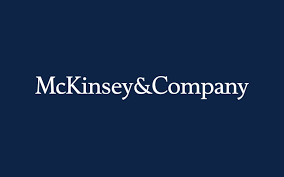
The CEO as elite athlete: What business leaders can learn from modern sports
By Bob Sternfels and Daniel Pacthod | McKinsey & Company | January 30, 2025
Extractive Summary of the Article | Listen
3 key takeaways from the article
- Today’s athletes are unquestionably better than those from even 25 years ago. For today’s chief executive officers, there’s a lot to learn from that remarkable progress. And the need is urgent, primarily because the playing field has become radically more difficult.
- In 2024, based on research, the authors identified a number of traits required for 21st-century leaders: positive energy; selflessness and a sense of service; a belief in continuous learning; grit and resilience; levity; and an acceptance of stewardship.
- How to get past the challenges of “living into” these attributes. We learned that the best leaders today have made a generational change in their thinking, one that closely parallels how elite athletes prepare, train, and compete. In several ways, the two jobs—CEO and athlete—are highly correlated. Here are five leadership practices of great athletes that business leaders can adapt to their own work. They use their time purposefully. They perfect the art of recovery. They are always learning. They embrace data and analytics. They are adaptable and resilient.
(Copyright lies with the publisher)
Topics: Leadership, Transformation, Continuous Learning, Adaptability, Resilience, Purpose
Click for the extractive summary of the articleSports fans love to compare today’s athletes to the legends of the past and speculate about who’s the best. While many of us cherish our childhood memories, it’s a cold, hard fact that, in almost every case, today’s athletes would handily defeat their predecessors. As a flamethrowing relief pitcher said in 2018, if Babe Ruth, arguably one of the greatest players in major league history, were playing today, “I would strike him out every time.”
Exaggeration? Maybe a little. But it’s undeniable that today’s athletes in every sport are bigger, stronger, faster, better coached, better rested, better fed, better equipped, and more prepared. The development of sports technology and sports science—new ideas in nutrition, recovery, in-game strategy, coaching, athletic techniques, you name it—means that today’s athletes are unquestionably better than those from even 25 years ago.
For today’s chief executive officers, there’s a lot to learn from that remarkable progress. And the need is urgent, primarily because the playing field has become radically more difficult. CEOs are on the job 24/7, responsible for addressing an ever-shifting array of problems and threats, even when there is incomplete information (usually) and when every move is under scrutiny (constantly). Not only do CEOs have to deal with a wide range of stakeholders, all of them with their own priorities, but employees are increasingly demanding—as they should be. Plus, technology is changing at warp speed, and the geopolitical environment is unsettled. When companies slip up, they are judged harshly, not least through social media.
The 2024 based on research, the authors identified a number of traits required for 21st-century leaders: positive energy; selflessness and a sense of service; a belief in continuous learning; grit and resilience; levity; and an acceptance of stewardship. Since that time, they have been in dialogue with CEOs about how to get past the challenges of “living into” these attributes. We learned that the best leaders today have made a generational change in their thinking, one that closely parallels how elite athletes prepare, train, and compete. In several ways, the two jobs—CEO and athlete—are highly correlated. Here are five leadership practices of great athletes that business leaders can adapt to their own work. They use their time purposefully. They perfect the art of recovery. They are always learning. They embrace data and analytics. They are adaptable and resilient.
show less
18 Strategies To Ensure Your Company Upholds Ethical HR Data Practices
By Expert Panel | Forbes | February 12, 2025
Extractive Summary of the Article | Listen
2 key takeaways from the article
- Employee data is more than just numbers on a spreadsheet—it represents real people who trust their employers to handle their information responsibly. As such, HR leaders must balance data-driven decision-making with the ethical obligation to protect privacy and maintain transparency. Missteps in how data is collected, stored or used can quickly erode trust, so it’s essential to have clear policies and safeguards in place.
- Some of the best strategies to ensure ethical data practices while maintaining employee confidence are: employ secure technology, establish a data strategy, be transparent about policies, only collect what’s necessary, get employee consent, be available to answer questions, form a governing committee, give employees a voice, protect prospects’ work emails, align policies with privacy laws, involve the it department, refine processes regularly, build employees’ consent into your framework, ensure employees know their rights, limit collection and ensure confidentiality, stay up-to-date on global laws, monitor data usage, and define data privacy standards.
(Copyright lies with the publisher)
Topics: HR Management, Data Privacy, Employee Data, Transparency
Click for the extractive summary of the articleEmploy Secure Technology
Establish A Data Strategy
Be Transparent About Policies
Only Collect What’s Necessary
Get Employee Consent
Be Available To Answer Questions
Form A Governing Committee
Give Employees A Voice
Protect Prospects’ Work Emails
Align Policies With Privacy Laws
Involve The IT Department
Refine Processes Regularly
Build Employees’ Consent Into Your Framework
Ensure Employees Know Their Rights
Limit Collection And Ensure Confidentiality
Stay Up-To-Date On Global Laws
Monitor Data Usage
And Define Data Privacy Standards
show lessEntrepreneurship
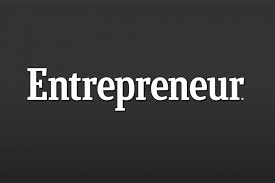
Co-Founders Must Answer These Crucial Questions Before Launching a Startup
By Dima Maslennikov | Edited by Chelsea Brown | Entrepreneur Magazine | February 12, 2025
Extractive Summary of the Article | Listen
2 key takeaways from the article
- Starting a business with co-founders is an exciting endeavor, but it also brings significant challenges. Misaligned expectations, unclear roles or overlooked details can derail even the most promising ventures. Before you dive into building your startup, it’s critical to address key questions about your partnership.
- Every founding team should develop their collective understanding in the followng areas to set a strong foundation for success: alignment on the vision and goals, agreement on core values and principles, Clarify roles and contributions, Address financial commitments and equity, Plan for decision-making and conflict resolution, Discuss ownership and exit strategies, Align on risk tolerance and ethics, Plan for personal circumstances, Define expectations for collaboration, and Prepare for success or failure.
(Copyright lies with the publisher)
Topics: Startups, Entrepreneurship, Partnerships
Click for the extractive summary of the articleStarting a business with co-founders is an exciting endeavor, but it also brings significant challenges. Misaligned expectations, unclear roles or overlooked details can derail even the most promising ventures. Before you dive into building your startup, it’s critical to address key questions about your partnership. Here’s a comprehensive guide to the questions every founding team should answer to set a strong foundation for success.
- Align on the vision and goals. The first step is ensuring that all co-founders share the same vision for the company. Questions to ask include: What is the ultimate goal of this business? Is it to sell the company or build it for long-term growth? What impact do we want our company to have on the world? What milestones should we achieve within the first year and in 10 years? Having clarity on the “why” behind your startup helps align priorities and sets the tone for strategic decisions.
- Define core values and principles. Your company’s values and operating principles will shape its culture and decision-making. Co-founders should discuss: What are the five core values that define our company for both employees and customers? What principles guide how we operate? For example, how do we handle transparency, ethics and accountability? How do we feel about concepts like “Fake it till you make it?” Are there limits to its application? Establishing shared values early ensures consistency as your team and business grow.
- Clarify roles and contributions. Ambiguity around roles and responsibilities can lead to confusion and conflict. Discuss: What is each co-founder’s specific role and area of responsibility? What are the expectations for time commitment and effort? What strengths does each co-founder bring, and how can we leverage them effectively? By defining these roles upfront, you reduce the risk of overlap and ensure that everyone knows their contribution to the company’s success.
- Address financial commitments and equity. Money is often a source of tension among co-founders. To avoid misunderstandings, discuss: How will equity be distributed, and why? Should it reflect financial investment, effort or both? Will there be a vesting schedule, and if so, what terms will it include? How will the company’s profits and dividends be distributed? Can partners take personal loans from the company, and under what conditions? A clear agreement on financial matters builds trust and prevents disputes later on.
- Plan for decision-making and conflict resolution. Startups move quickly, and decisions often need to be made under pressure. Agree on: How will decisions be made — unanimously, by majority vote or another method? What happens if a co-founder cannot participate in a critical decision? How will disputes be resolved? Will you use mediation, arbitration or another mechanism? Having a defined process for decision-making and conflict resolution ensures smoother operations during challenging times.
- Discuss ownership and exit strategies. Even the strongest partnerships may not last forever. It’s essential to plan for potential changes in ownership. Discuss: What are the terms for selling shares or exiting the company? Do remaining co-founders have the right to buy out a departing partner’s shares? What restrictions will we place on transferring ownership to external parties? What happens if one partner becomes inactive or unable to contribute? These questions help protect the company’s long-term stability and ensure fairness for all parties.
- Align on risk tolerance and ethics. Co-founders often have different comfort levels with risk and ethical boundaries. To avoid future disagreements, discuss: Are we willing to operate in “gray areas” of the law if necessary? How do we define “unethical business practices,” and what methods are off-limits? Are we open to working with government entities or forming public-private partnerships? Are there specific companies or industries we refuse to collaborate with? Being clear about your boundaries from the start prevents uncomfortable situations later.
- Plan for personal circumstances. Life happens, and personal circumstances can impact the business. Address these potential issues: Are there any current health issues, debts or obligations that partners should disclose? How will we handle situations like extended absences due to illness, burnout or personal commitments? What is the process for addressing changes in a partner’s ability to contribute? Open communication about personal matters fosters trust and transparency among co-founders.
- Define expectations for collaboration. Effective collaboration requires shared expectations about how you’ll work together. Discuss: How often will we meet to review our partnership agreement and realign our goals? Are there any restrictions on pursuing side projects or similar businesses? How will we handle hiring and managing employees, including friends or family members? Regularly revisiting these expectations helps maintain a healthy and productive working relationship.
- Prepare for success or failure. Finally, prepare for the best and worst-case scenarios. Discuss: What will we do if our business model doesn’t succeed? How will we pivot or dissolve the company? What happens if we achieve overwhelming success? How will we scale and distribute rewards? How will we handle offers for mergers, acquisitions or strategic partnerships? By planning for all scenarios, you can respond to opportunities and challenges with confidence.
